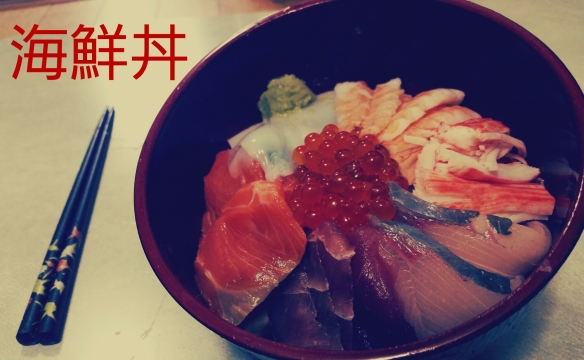 Took a shot at making homemade kaisendon 海鮮丼 (various sashimi on rice) today, think it turned out fair legit. I’ma show you a just how easy it is make your own too!
Took a shot at making homemade kaisendon 海鮮丼 (various sashimi on rice) today, think it turned out fair legit. I’ma show you a just how easy it is make your own too!
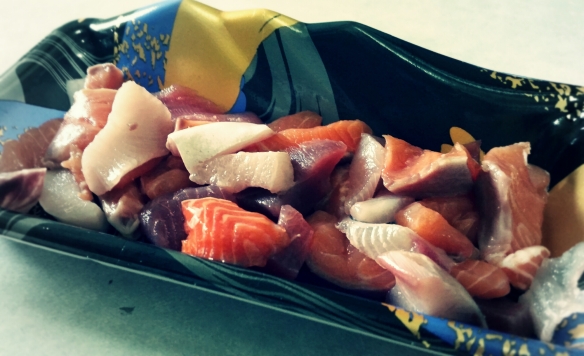 Now this recipe is actually different from the super pretty one I made above but its all the same. Most supermarkets here will stock kaisendon sashimi kits, they basically just include サーモン (salmon), まぐろ (tuna) and 鯛 (sea bream) that have been cut up into bite sized chunks. Unlike the super fancy kaisendon above this one only set me back about 400円 for the fish.
Now this recipe is actually different from the super pretty one I made above but its all the same. Most supermarkets here will stock kaisendon sashimi kits, they basically just include サーモン (salmon), まぐろ (tuna) and 鯛 (sea bream) that have been cut up into bite sized chunks. Unlike the super fancy kaisendon above this one only set me back about 400円 for the fish. 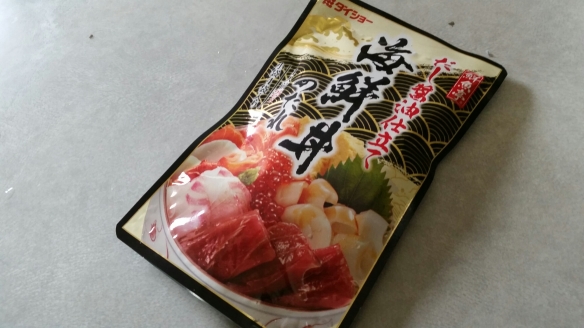 I picked up a packet of Kaisendon no tare 海鮮丼のたれ (soy based seasoning for the kaisendon) while I was grabbing the fish, it can either be used to marinate the sashimi before it is placed upon the rice or pored over the top once it is assembled.
I picked up a packet of Kaisendon no tare 海鮮丼のたれ (soy based seasoning for the kaisendon) while I was grabbing the fish, it can either be used to marinate the sashimi before it is placed upon the rice or pored over the top once it is assembled. 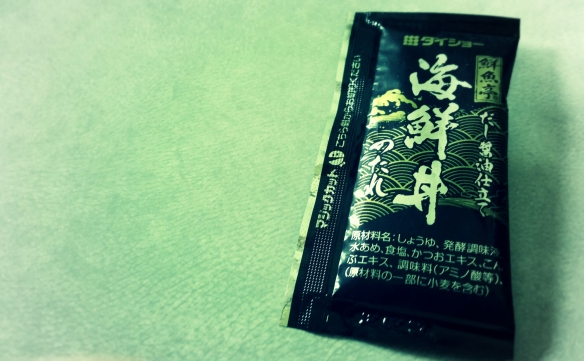 Here is one of the little packets of the sauce. Tare たれ is used in a huge array of Japanese dishes from nabe to sashimi to yakiniku, and is essentially flavored or thickened soy sauce with added dashi, vinegar, etc. That said each variation is a little different depending on the dish it is to be used with.
Here is one of the little packets of the sauce. Tare たれ is used in a huge array of Japanese dishes from nabe to sashimi to yakiniku, and is essentially flavored or thickened soy sauce with added dashi, vinegar, etc. That said each variation is a little different depending on the dish it is to be used with. 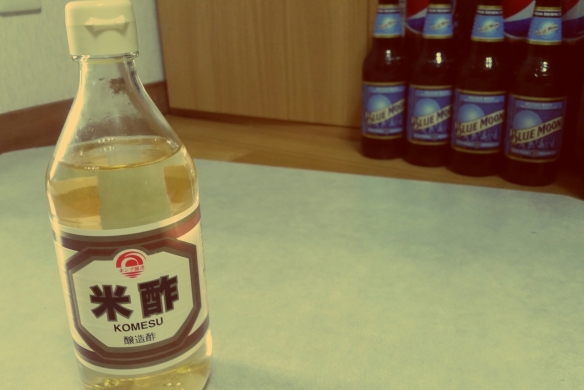 I really like sushi rice so I decided to make some to go underneath the fish. Its super easy to do, this is the 米酢 (rice vinegar) that I like to use, you simply add it to the freshly steamed rice with a little sugar and salt straight out of the rice cooker. http://www.wikihow.com/Make-Sushi-Rice But i don’t need to get into that.
I really like sushi rice so I decided to make some to go underneath the fish. Its super easy to do, this is the 米酢 (rice vinegar) that I like to use, you simply add it to the freshly steamed rice with a little sugar and salt straight out of the rice cooker. http://www.wikihow.com/Make-Sushi-Rice But i don’t need to get into that. 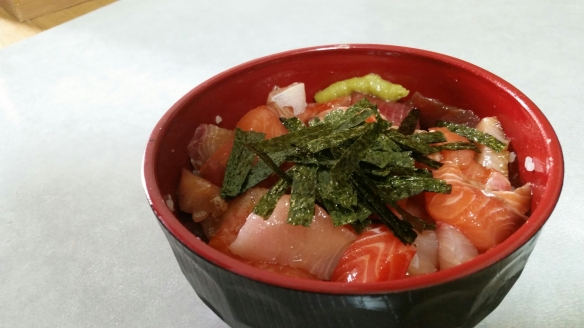 And here is the finished product, garnish with some shredded nori 海苔 (dried seaweed) and a little wasabi, Enjoy!
And here is the finished product, garnish with some shredded nori 海苔 (dried seaweed) and a little wasabi, Enjoy!






























































